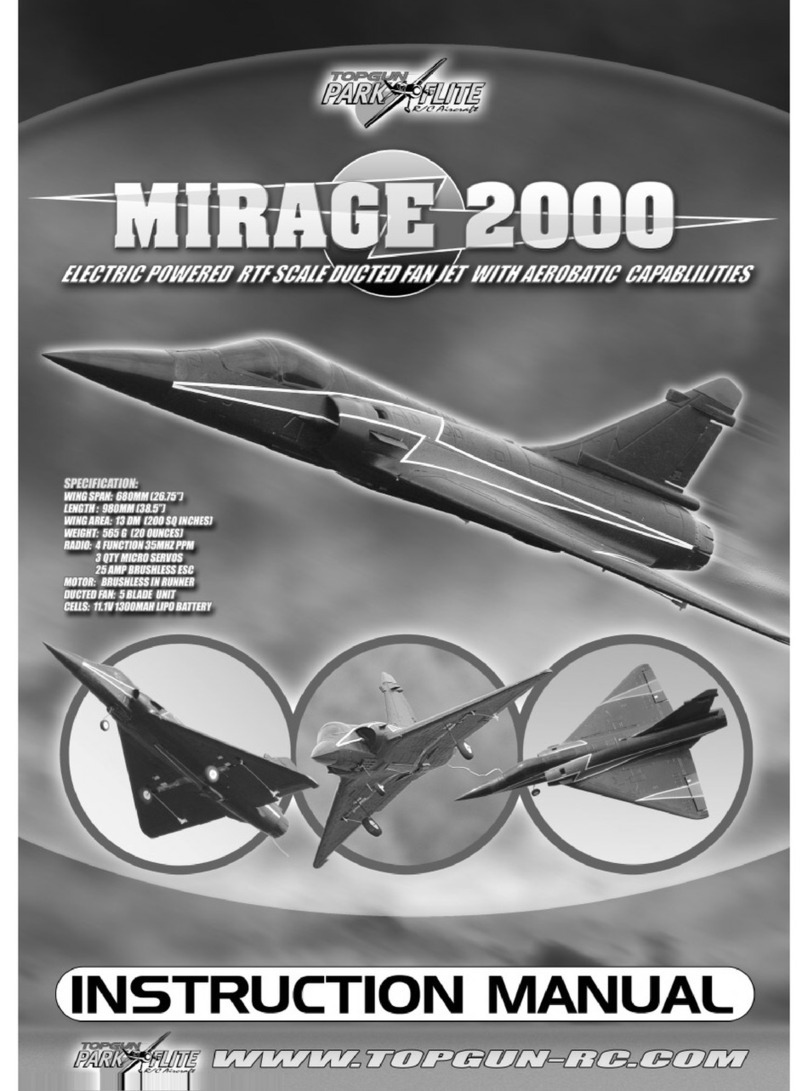7
SECTION 2: BATTERY AND CHARGER WARNING!
A lithium polymer (LiPo) battery rated at 10C
and charger is included as part of this package
and these cells must be operated with care to
prevent the risk of fire.
LiPo Batteries are soft cased and can be easily
damaged by sharp items, puncturing of the soft
casing can cause fires and we recommend that
they are stored and handled carefully.
Use only a LiPo rated charger, set to a
maximum of 3 cells (11.1v) and 1 amp charge
current.
Remove battery from the aircraft and charge on
a non flammable, non conductive surface.
BATTERY AND CHARGER
The Skylane includes a high performance 11.1V (3
cell) 1250mAh LiPo Battery rated at 10C max
discharge.
This must be charged using the dedicated 12v DC
input 0.8 to 1A output fast charger and connecting
lead
Connect the crocodile lead connectors to a 12V DC
power source (a 12V car battery is ideal), ensuring
that correct polarity is observed. Red is positive (+)
and Black is Negative (-).
Connect the lead into the battery charger. The power
light will illuminate and all three LED,s will flash as
a system check.
Push the white balance plug of the battery into the
11.1v charger output socket to commence charging.
The Indicator light changes from amber to green
when the charge is complete
A full charge will take between 1 and 2 hours.




























